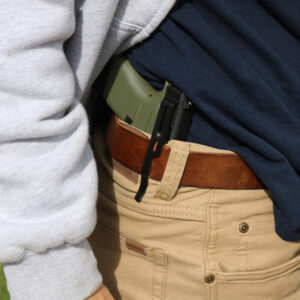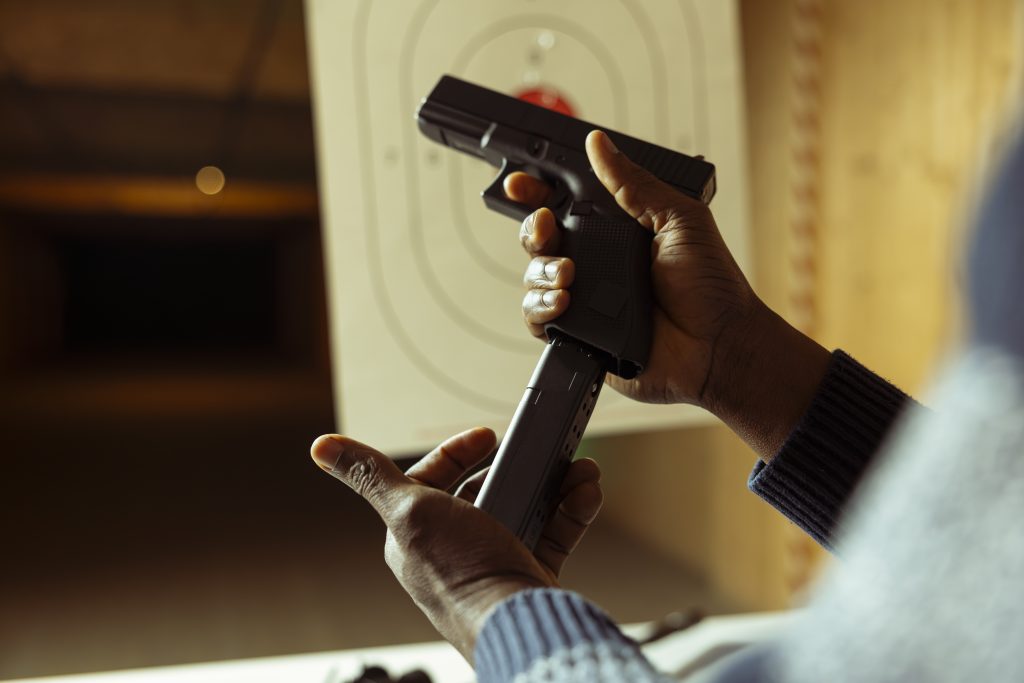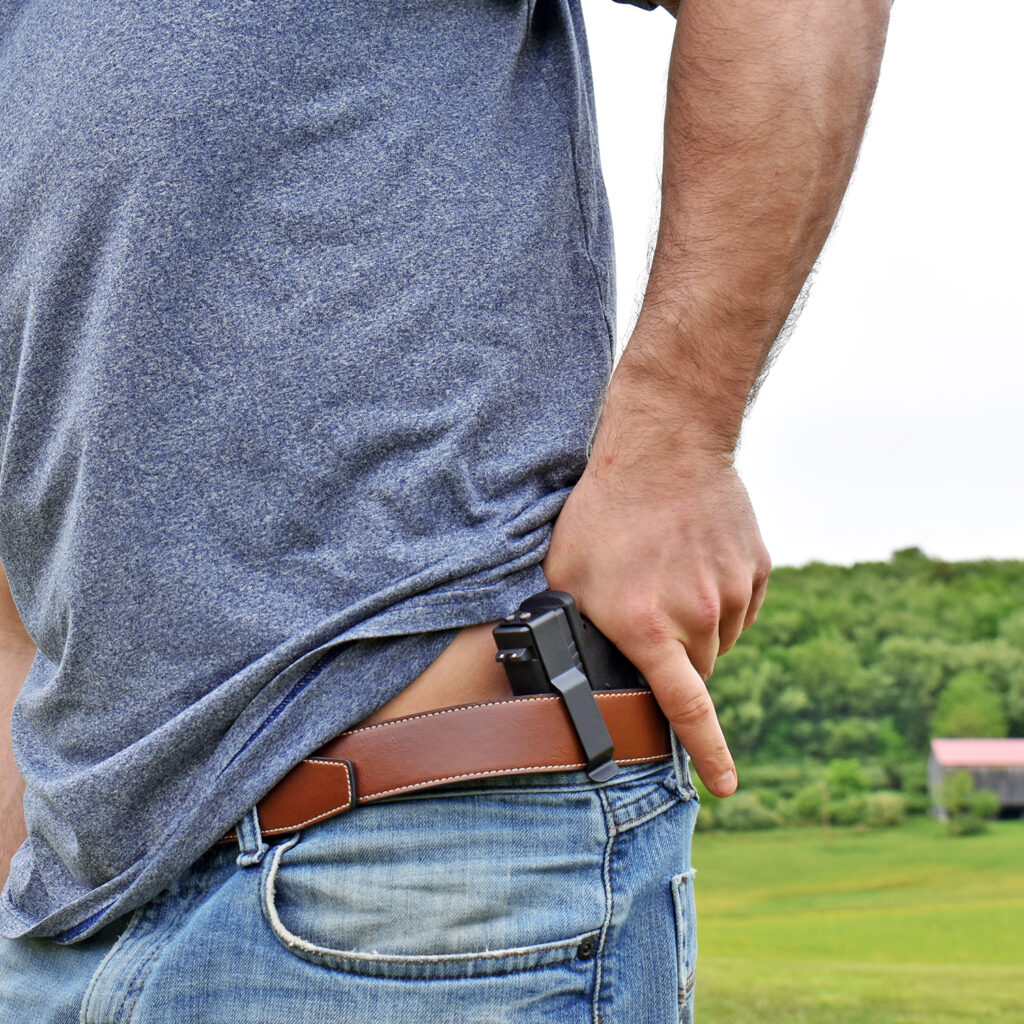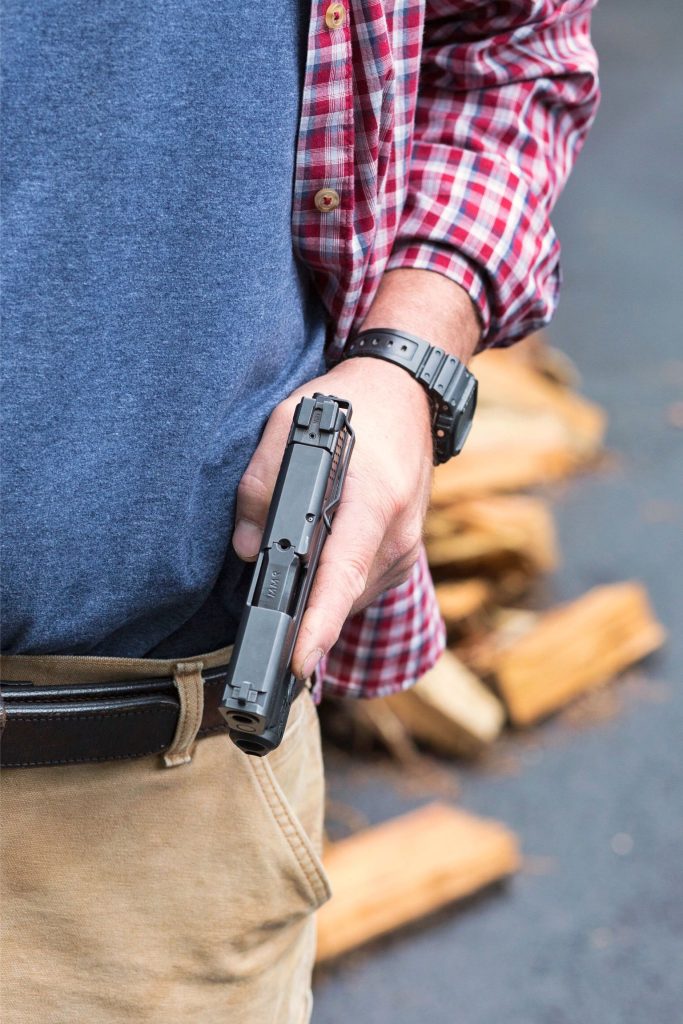Whether you have already obtained a concealed carry permit and simply need a refresher or you’re conducting research to prepare for concealed carry class, you’ve come to the right place.
We’ve broken down the basics for you in this guide containing important concealed carry beginner tips. Here is a list of concealed carry “do’s and don’ts” to get you started:
Concealed Carry Do’s and Don’ts
Do: Try to Carry As Often As Possible
The point of carrying a concealed firearm is to have a method of defending yourself (and innocent bystanders) in the event of an unexpected assault, robbery, act of terror, etc. That said, you should strongly consider carrying pretty much everywhere you go, unless otherwise restricted by Federal, State, or local legislation.
Places You Shouldn’t Concealed Carry
Here are some common examples of places where carrying a concealed firearm is illegal:
- School Zones
- Federal Buildings
- State & National Parks
- Airports
Don’t: Draw Your Gun Unless You Intend to Use it
This beginner tip should be strongly emphasized in concealed carry preparation courses, but it’s worth emphasizing once more here. You should never simply brandish your firearm in an attempt to de-escalate a situation with a violent attacker. The only way to de-escalate a situation where a criminal is jeopardizing innocent lives is to neutralize the attacker. In other words, once you draw your gun, you must be ready to fire at the attacker without hesitation. Otherwise, you risk provoking the attacker and further escalating the situation. It goes without saying that you better be 100% sure you have a good reason to draw, point, and fire your concealed firearm.
When You Should Draw a Concealed Firearm
In a nutshell, you should only draw a concealed firearm when someone (you or an innocent bystander) has reason to fear for their life or is at risk of great injury. There are other situations where the use of a concealed firearm may be acceptable, depending on State laws. Many states allow the use of a concealed firearm to stop an armed robbery, sexual assault, or other in-progress felonies. Be sure to know your State and Local regulations in that regard.
Do: Practice & Perfect Your Holster Draw
If you are new to concealed carrying, practicing and perfecting your holster draw is one of the most important tips. In the event of a life-threatening situation, split seconds could be the difference between life and death.
How to Practice Your Holster Draw
You can practice your holster draw in private at home with an unloaded firearm to build up some muscle memory — just be sure to always holster in the same position to keep things consistent! Additionally, you should take some trips to the shooting range and practice drawing and actually firing your gun as you would in a life-threatening situation.
Don’t: Adjust or Reposition Your Holster in Public
Even if you are just making a slight adjustment, an average bystander (or even a law enforcement officer) may see you reach for the gun holster and think you are preparing to draw and fire the weapon. In order to avoid such confusion, refrain from making any adjustments to your holster in public.
Where to Go When You Need to Adjust Your Holster
If you absolutely need to make an adjustment to your holster, go somewhere private such as your car, a single-person bathroom, or better yet, go home if you can!
Do: Keep Your Permit With You While Carrying
This should go without saying, but a beginner guide wouldn’t be complete without this tip, because you can land yourself in some serious trouble by carrying without a permit.
Where to Keep Your Permit While Carrying
You should always keep your permit on your person when you are carrying unless the laws in your state allow for permitless concealed carry.
Don’t: Carry While Consuming Alcohol
Not only is it illegal to carry a concealed firearm while drinking or under the influence of alcohol, but it’s also simply unwise. Avoid guns completely while under the influence of any substance.
What to Do With a Concealed Firearm Before You Start Drinking
Your best bet is to simply leave the gun at home before going out for drinks.
Do: Know the Laws in Areas You Are Carrying
Some states may require you to notify law enforcement officers who address you of any concealed firearms that you are carrying. Be sure you know exactly what to do if you get pulled over or otherwise confronted by a police officer in a scenario where you are carrying.
How to Tell Police Officers That You Are Carrying a Concealed Firearm
Avoid saying something blunt like “I have a gun in here,” and instead opt for something to the effect of, “I have a license to carry a concealed firearm.”
Don’t: Make it Obvious That You Are Carrying
One of the benefits of carrying a concealed firearm is that you can catch a criminal by surprise — as long as you are concealing properly. If it’s obvious that you are carrying, you lose the element of surprise and may even become a primary target for a potential attacker.
How to Discreetly Carry a Concealed Firearm
In order to prevent ‘printing’, you must dress appropriately and choose a gun that is small enough to work with your wardrobe. Additionally, you’ll want a minimalistic holstering method.
Do: Wear Clothes That Enable Discrete & Comfortable Concealment
You may have to make some minor adjustments to your daily outfits whenever you are carrying a concealed firearm, but you can still

dress fashionably while carrying!
How to Dress for Concealed Carry
The ideal outfit for concealed carrying will depend on your weapon of choice (and your fashion preferences). But generally speaking, you’ll want to wear a long shirt or jacket that covers the gun without hugging too tightly, to avoid printing.
Holster With a Clipdraw Gun Clip for Minimal Printing
Whether you are a beginner or long-time permit holder, finding a practical holstering method is crucial. Clipdraw offers a wide range of gun clips for various brands and models, providing an alternative to traditional holsters that make it tough to minimize printing. Find a Clipdraw Gun Clip for your weapon of choice today!


